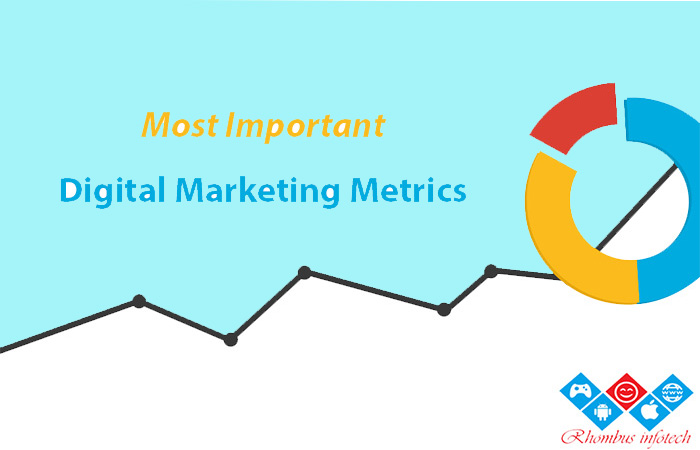There are many metrics that make up a good Digital Marketing, but there are a few that should be looked at more closely than the others:
Whether you’re trying to reach a specific audience, or just trying to compete with others in your industry as far as getting attention online is concerned, digital advertising has probably crossed your mind.
While organic search traffic still matters – as well as maintaining a professional, current website – digital advertising has become important across the board for expanding your online reach, growing your brand and spreading the messages that are most important to your business.
They’re also confusing. It wouldn’t be hard for someone new to the world of digital ads to spend a significant amount of money without seeing the returns they hope to see. Even worse, identifying whether a campaign is truly successful can pose a significant challenge.
New to the world of digital advertising? That’s okay. Here are the most important metrics you should start following to evaluate the success of your new campaign.
1. SITE VISITS
This is fairly cut and dry. If no one is visiting your site, your online efforts are falling flat. Using various analytic and digital advertising platforms, you can track the number of individuals visiting your website. In most cases, the higher the number, the better. While broad, this metric is a basic factor of how a given campaign – and your site overall – is performing.
2. CHANNEL-SPECIFIC TRAFFIC
To begin to narrow down your site visits, you should be able to track how individuals are coming to your site. The top options include:
Paid (through paid campaigns)
Organic (through search, but not paid campaigns)
Direct (those who came directly to your site – not tied to a campaign)
Social (through social channels)
Referrals (visitors who came to your site through links on other sites)
To determine whether your digital “paid” campaign is effective, you can measure it against the other channels listed above.
3. CONVERSIONS
Conversions can be tricky; that’s because conversions look different for every business.
To make it simple, a conversion is any time a website visitor takes the action you’re hoping they will. This could include:
Filling out an online form.
Making a purchase.
Downloading a document, white paper, e-book or other tool, or, taking any other number of actions.
To determine what your “conversion” is, think about the action you’d like someone to take after clicking on your ad.
4. AVERAGE PAGE VIEWS PER VISIT
Chances are, the more pages a website visitor takes the time to read through and interact with, the more likely that individual is to take the action you’d like them to take… to convert. Tracking how many page views a given campaign creates, on average, can help you evaluate which campaigns are most effective.
5. AVERAGE TIME SPENT ON WEBSITE
Comparable to average page views per visit, understanding how long your visitors stay on your site can help you determine whether your message is being spread effectively. Often, the average page views per visit and average time spent on website correlate closely; the more pages a visitor visits, the more time he or she will spend on your site.
For specific campaigns, tracking the time spent on a single page – the page you’re promoting – is also helpful.
6. BOUNCE RATES
A bounce rate refers to how many visitors come to your site – or page – just to navigate away without visiting any other pages. A lower bounce rate is the goal here.
New to the world of digital advertising? That’s okay. In general:
Excellent bounce rate: 26-40 percent.
Average bounce rate: 41-55 percent.
Higher than average bounce rate: 56-70 percent.
Disappointing bounce rate: over the 70-75 percent range.
It’s important to point out, however, that for some situations – a blog, a single-page website or landing page, a product page, a higher bounce rate may not be cause for alarm.
7. RETURNING VISITORS
In the real world, the more you interact with a specific individual, the more likely that individual is to become a customer or client.
The online world is no different. When someone returns to your website time and time again, they may be more likely to convert (see number 3).
8. CLICK-THROUGH RATES
A click-through rate refers to the number of visitors out of every hundred that clicked on an ad to arrive at a given website. This does not include those who came from other sites or visited after seeing the ad but not clicking on it. It’s a direct measure of the success of a specific ad campaign.
9. COST PER CONVERSION
In certain campaigns, you may be paying per conversion (see number 3 again). This means you’re paying for users to take your desired, pre-defined action as a result of seeing your ad. Understanding how much each conversion costs can be an important measure of ROI, as well as a measure of whether your campaign is eliciting the results you’re hoping to see.
10. COST PER CLICK
The original digital campaign model, which is still widely popular, is the cost per click model. Here, just as it sounds, you’re paying per click on your ad. Adjusting this in your daily budget can help you stand out from the competition and gain more visibility in your desired space. Tracking it after the campaign is set up can help you determine whether your campaign is measuring up to your expectations.
This is just a brief overview of the metrics that may be worth your attention after setting up a digital marketing campaign.

